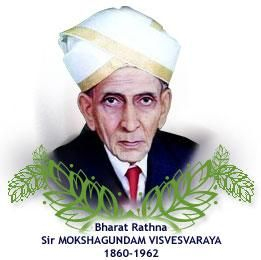Mountain Man:
Dashrath Manjhi, also known as the Mountain Man, was born on January 14, 1934, in Gehlaur, a small village in Bihar, India. After running away from home at a young age, he worked in coal mines in Dhanbad, Jharkhand, before returning to Gehlaur and marrying Falguni Devi.
Gehlaur was a village with few resources, bordered by a steep quartzite ridge that made access to nearby towns difficult. In 1959, Manjhi's wife was seriously injured after falling from the mountain. Due to the lack of immediate medical care, she tragically passed away. This incident deeply affected Manjhi, inspiring him to carve a path through the ridge to make his village more accessible.
Armed only with a hammer and chisel, Manjhi began his monumental task in 1960. He worked tirelessly for 22 years, enduring ridicule and skepticism from fellow villagers. Despite the odds, he succeeded in carving a 110-meter-long, 9.1-meter-wide, and 7.7-meter-deep road through the rocky ridge. His efforts reduced the distance between the Atri and Wazirganj sectors of Gaya district from 55 km to 15 km, significantly easing travel and improving access to medical care.
In recognition of his incredible determination and contribution to society, Manjhi traveled to New Delhi, where he was honored by Bihar's Chief Minister, Nitish Kumar. In 2006, the Bihar government proposed his name for the Padma Shree award in social service.

Once upon a time in a small village nestled between towering mountains, lived a young girl named Elara. From an early age, Elara harbored a deep passion for painting. Her village, however, was known for its hardworking farmers and not for nurturing artists. Her parents, though loving and supportive, struggled to understand her dream. They wanted her to follow a more practical path, one that would ensure a steady income and a secure future.
Every day after her chores, Elara would retreat to a small clearing in the forest with her modest collection of paints and brushes. She would lose herself in the world of colors, painting the beauty of the nature surrounding her. Despite her talent, she often felt disheartened, knowing that her dreams seemed as distant as the mountains that bordered her village.
One winter, a severe storm hit the village, causing widespread damage. The crops were destroyed, and many homes were badly damaged, including Elara's. Her family faced dire financial hardship, and Elara had to put her dreams on hold to help rebuild their lives. She worked tirelessly alongside her parents, her hands rough and blistered from labor. The paints and brushes lay untouched, gathering dust.
Months passed, and the village slowly began to recover. One day, a traveling art merchant visited the village, displaying a variety of paintings and art supplies. Elara's heart raced as she saw the vibrant colors and intricate designs. She timidly approached the merchant, her eyes wide with wonder. Noticing her keen interest, the merchant struck up a conversation with her. Elara shyly admitted her love for painting and the dreams she had tucked away.
Moved by her story and the glimmer of passion in her eyes, the merchant offered Elara a deal. He proposed that she paint something for him, and if he found it worthy, he would take her work to the city and showcase it in his gallery. Elara felt a surge of hope and determination. She retrieved her dusty paints and brushes and set to work. She painted with all her heart, pouring her emotions and experiences into her art.
A week later, she presented her painting to the merchant. It was a breathtaking depiction of the village's recovery after the storm, capturing the resilience and strength of her community. The merchant was astounded by the depth and beauty of her work. True to his word, he took the painting to the city.
Days turned into weeks, and Elara continued with her daily life, helping her family and painting whenever she could. One sunny afternoon, the merchant returned with astonishing news: Elara's painting had been sold to a renowned art collector for a significant sum. Not only that, but several galleries expressed interest in her work.
Elara's heart soared. The merchant invited her to the city, offering her a chance to study and develop her skills further. With her parents' blessing, Elara embarked on a new journey. In the city, she faced new challenges, from navigating the bustling streets to competing with other talented artists. But her determination and passion never wavered. She worked diligently, learning from every experience and continually honing her craft.
Years later, Elara returned to her village, not as the girl with a hidden dream, but as a celebrated artist. She used her success to give back to her community, establishing an art school to nurture the talents of young villagers. The once humble village became known as a hub of creativity and art, all thanks to Elara's unwavering dedication and the struggles she overcame.
Elara's story spread far and wide, inspiring countless others to pursue their dreams despite the odds. And so, the girl who once felt confined by her circumstances transformed her world with the power of her passion and resilience, leaving a legacy that echoed through generations.
#inspiring #motivating #women #independent #farming
The Inspirational Story of Sir M. Visvesvaraya: A Visionary Engineer and Nation Builder
Sir Mokshagundam Visvesvaraya, fondly known as Sir MV, was a man of extraordinary vision and dedication whose contributions have left an indelible mark on India’s progress and development. Born on September 15, 1860, in Muddenahalli, a small village in Karnataka, he rose to become one of the most distinguished engineers and statesmen of his time.
Early Life and Education
Sir MV's journey began in a modest family where education was highly valued despite limited resources. His father, a Sanskrit scholar, instilled in him the importance of knowledge and learning. After completing his early education in Chikkaballapur, he attended the Central College in Bangalore. His exceptional academic performance earned him a government scholarship to study at the prestigious College of Engineering, Pune, where he graduated with a degree in civil engineering in 1884.
Engineering Marvels and Innovations
Visvesvaraya’s career as an engineer was marked by numerous groundbreaking projects that showcased his ingenuity and foresight. One of his early achievements was the design and implementation of an intricate system of irrigation in the Deccan region, which transformed arid lands into fertile fields, significantly boosting agricultural productivity.
His most celebrated work came with the construction of the Krishna Raja Sagara (KRS) dam in Mysore. At the time, it was one of the largest reservoirs in India and a testament to his engineering prowess. The dam not only provided a reliable water source for irrigation but also contributed to hydroelectric power generation, fostering industrial growth in the region.
Contribution to Nation Building
Beyond engineering, Sir MV played a pivotal role in nation-building. In 1912, he was appointed the Diwan of Mysore, a role in which he served with distinction until 1918. His tenure was marked by comprehensive reforms in education, industry, and infrastructure. He established the Mysore University, modernized the state's administrative machinery, and promoted industrialization, laying the groundwork for Mysore's transformation into a progressive state.
Vision and Legacy
Sir MV’s vision extended far beyond his immediate projects. He believed in the power of education and technical training to drive national development. His emphasis on creating institutions of learning and research, such as the Government Engineering College in Bangalore (now known as University Visvesvaraya College of Engineering), underscored his commitment to empowering future generations.
In recognition of his invaluable contributions, Sir M. Visvesvaraya was knighted by King George V in 1915 and awarded the Bharat Ratna, India's highest civilian honor, in 1955.
An Enduring Inspiration
Sir M. Visvesvaraya's life is an enduring source of inspiration. His story teaches us the power of vision, dedication, and relentless pursuit of excellence. He demonstrated that with determination and hard work, even the most daunting challenges can be overcome.
As we celebrate his legacy, we remember Sir MV not just as a brilliant engineer but as a true nation builder whose contributions continue to inspire and guide us towards a brighter future.
Conclusion
The story of Sir M. Visvesvaraya is a beacon of hope and motivation. His achievements remind us that greatness is not merely a product of talent but of perseverance, innovation, and a deep commitment to serving humanity. As we reflect on his life, let us strive to embody his spirit of excellence and dedication in our own endeavors.
Call to Action
Let us honor Sir MV's legacy by fostering innovation, pursuing knowledge, and contributing to the betterment of society. His life is a testament to the fact that with vision and hard work, we too can build a brighter, more prosperous future.

Priya: a rural enlightenment
There was a young girl named Priya who had a big dream of becoming a doctor. Despite facing many challenges and limitations growing up in a poor family, Priya never gave up on her dream. She studied hard, often using the light from a small kerosene lamp late into the night because her village had limited electricity.
With determination and perseverance, Priya managed to excel in her studies and eventually earned a scholarship to medical school. She returned to her village years later as Dr. Priya, the first female doctor from her village. She set up a small clinic to provide healthcare to the villagers who previously had to travel long distances for medical help.
Priya's story inspired many young girls in the village to pursue their dreams, showing them that with hard work and dedication, anything is possible, no matter where you come from.
Here are the rules and regulations for the "Stories of Indians" contest on Connecting Town:
1. Eligibility:
1.1. The contest is open to all residents of India, aged 18 and above.
1.2. Participants must have a valid Connecting Town account to enter the contest.
2. Entry Submission:
2.1. Entries must be submitted as a written post on Connecting Town.
2.2. Participants can submit one entry per person.
2.3. All entries must be original and must not infringe upon the copyrights or intellectual property rights of any third party.
2.4. Entries should be in English or one of the recognized Indian languages (Hindi, Bengali, Telugu, etc.).
2.5. Each entry should include a title and a brief description of the story or biography being shared.
3. Content Guidelines:
3.1. Entries should be short stories or biographies that highlight the lives, experiences, struggles, achievements, or inspiring moments of ord

Pratima Yadav
Delete Comment
Are you sure that you want to delete this comment ?
Archie _V
Delete Comment
Are you sure that you want to delete this comment ?